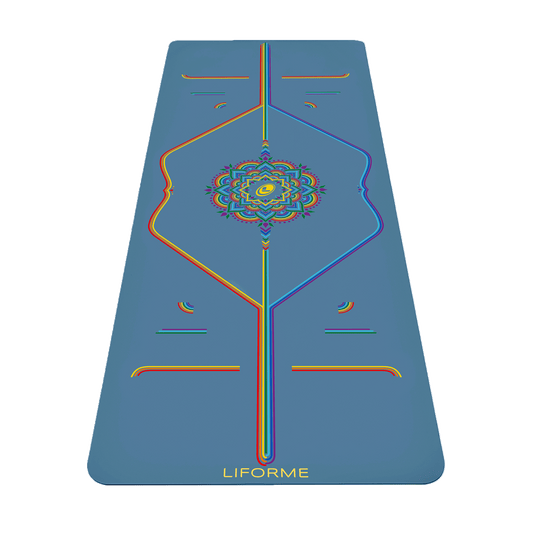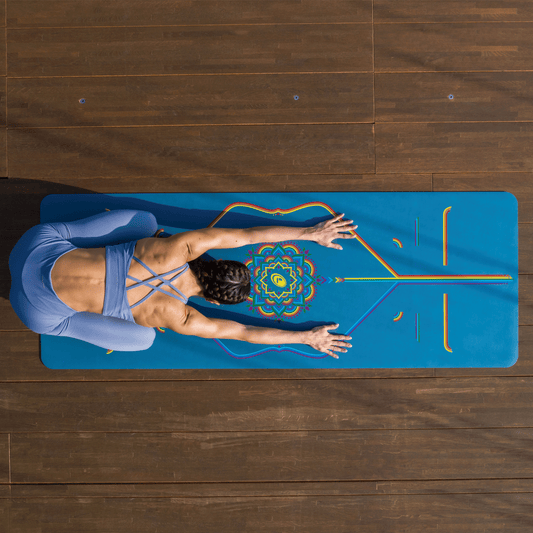Ana Forrest is the founder of Forrest Yoga, an intensely physical and spiritual style of practice that prioritises emotional healing through attention, movement, ritual, and sound. Ana and her husband, Jose Calarco, teach internationally. Ana spoke to Live for More about finding balance on and off your yoga mat.
How can a physical characteristic like strength or balance that is cultivated on the mat move into other aspects of life?
I designed Forrest Yoga to equip people with tools they can use in their daily lives. For example, in Forrest Yoga we hold poses for usually 5-10 breaths, depending on the kind of sequence. This cultivates strength and balance on the mat. Off the mat, your breath gives you time to think before you react to a situation or person. In a long hold, your brain may tell you it’s time to quit. It’s not! Learning to ride the wave of intensity in a yoga pose, in a pain-free, struggle-free way, serves you in every aspect of your life.

Image credit: Bella Zanesco
Forrest Yoga is deeply invested in transformation. How do you keep your balance during times of change?
Change and transformation can be scary business. When faced with fear, these are some of the best tools for recalibrating and finding your balance:
1. Active Feet: When we get fearful, we get caught up in our chest, neck, and jaw. Keeping your feet active makes the energy travel down to some of the biggest bones and muscles and makes you rooted, grounded. It also keeps you more aware, because you’re breaking a habitual posture.
2. Deep breathing: When we’re afraid, we hold our breath, literally making ourselves gasp for air. This keeps you from being clear-headed and centered. Deep breathing changes your physiological response to fear, making you better able to think clearly and take right action.
3. Relax Your Neck: This is essential for changing your response to fear. A perpetually tight neck and jaw send fear, stress and anxiety signals throughout the body, which stunts your ability to transform.

Image credit: Rose Yuen
You are well known for your handstands and arm balances. Why are these poses important to you? What do they bring to an asana practice?
Handstands and Arm Balances are some of my favourite poses (I don’t normally teach Headstand because I don’t like the compression on the top neck vertebrae).
Inversions, for example, build strength, a sense of empowerment, are tons of fun and they’re exhilarating! They are great poses for chasing depression right out of your cell tissue. Going upside down gives you a lot of energy — a wonderful replacement for coffee. These poses nourish adrenal glands and kidneys, not deplete them! I love teaching people to be the “architect of their own pharmacopeia.” In other words, rinsing out the stress chemicals like cortisol and turning on the feel-good chemicals — the endorphins. The endorphins make us feel more resourceful and happy to be alive. Inversions give us a wonderful brain wash and refresh.
Does music have a role in bringing balance to a yoga class? Is it part of a teacher’s role to use music evocatively?
No… and no. We’ve seen and experienced music being used in different ways in yoga. For example, music through an entire yoga class can be a distraction to students, which is why I don’t train Forrest Yoga teachers to teach to music.
Jose and I use ancient, and Jose’s contemporary, music very specifically in our Ceremonies to penetrate where words do not reach, skillfully weaving First People’s ancient spiritual technology with our insights and healing skills.
We are creating a new riverbed for Forrest Yoga and are the forerunners of growing yoga in a more meaningful way. Teachers need to experience what we are doing and soak our Good Medicine teachings into their bones. When a teacher develops this deep visceral wisdom, then they can bring it to their students in an authentic way.
You and Jose both have creative vocations that became successful careers. Do you have advice on how to balance the two?
We have been training all our lives for what we are now doing. We are using everything we have learned for our work now.
Our ‘creative vocations’ are weaving shining threads of beauty and purpose into the masterpiece of our career.
Our advice:
• Set your intent each morning
• Pray
• Daily action…i.e. answer emails, do yoga and your creative thing as a daily discipline, and
• Breathe deeply through all of it.
As partners that work together, how do you balance your personal and professional lives?
We moved heaven and earth to be together and work together. We are on tour more often than not. We love to commune with nature, do yoga, and sing. Jose sends out the seeds of the future daily through cyber space, in the email form.
To find out more visit Forrest Yoga or check out @forrestyoga on Instagram
Feature image credit: Bella Zanesco




































